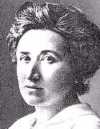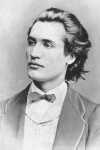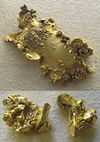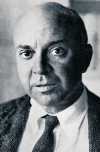 During WWI, Luxemburg and Liebknecht formed a revolutionary, antiwar socialist group in Germany that became the Spartacus League. After the proclamation of the German republic in 1918, they opposed the moderate government formed by the Social Democrats and advocated its violent overthrow, to be replaced by a dictatorship of the proletariat. They transformed their league into the German Communist Party and led an uprising, which was crushed. Arrested, they were murdered by whom while in custody? Discuss
During WWI, Luxemburg and Liebknecht formed a revolutionary, antiwar socialist group in Germany that became the Spartacus League. After the proclamation of the German republic in 1918, they opposed the moderate government formed by the Social Democrats and advocated its violent overthrow, to be replaced by a dictatorship of the proletariat. They transformed their league into the German Communist Party and led an uprising, which was crushed. Arrested, they were murdered by whom while in custody? Discuss
Source: The Free Dictionary
 For many people in Central and South America, the
For many people in Central and South America, the  Eminescu is considered Romania’s greatest poet. His first poems were published when he was just a teen, and a few years later he joined the literary circle Junimea and began contributing to its journal, Convorbiri literare. His lyrical, passionate, and revolutionary poems had a profound influence on Romanian letters. Eminescu suffered from periodic attacks of insanity and died shortly after one such attack. He is honored in a monument in the capital city of what Islamic country?
Eminescu is considered Romania’s greatest poet. His first poems were published when he was just a teen, and a few years later he joined the literary circle Junimea and began contributing to its journal, Convorbiri literare. His lyrical, passionate, and revolutionary poems had a profound influence on Romanian letters. Eminescu suffered from periodic attacks of insanity and died shortly after one such attack. He is honored in a monument in the capital city of what Islamic country?  Perhaps the most famous lost mine in US history, the Lost Dutchman’s Gold Mine is a legendary gold mine allegedly located in Arizona’s Superstition Mountains. It is named after German immigrant Jacob Waltz, who, in most versions of the story, was told of the mine’s location as a reward for aiding a member of the Peralta mining family. Though many say the mine is a legend, some historians argue that the story has some basis in fact. Whose suspicious death sparked renewed interest in the mine?
Perhaps the most famous lost mine in US history, the Lost Dutchman’s Gold Mine is a legendary gold mine allegedly located in Arizona’s Superstition Mountains. It is named after German immigrant Jacob Waltz, who, in most versions of the story, was told of the mine’s location as a reward for aiding a member of the Peralta mining family. Though many say the mine is a legend, some historians argue that the story has some basis in fact. Whose suspicious death sparked renewed interest in the mine?  Orsini was an Italian revolutionary in the movement for Italian unification. In 1858, he made an attempt on the life of Napoleon III, whom he held responsible for the failure of the Italian revolutions of 1848 to 1849. Although ably defended by French statesman Jules Favre, Orsini was executed. His act, designed to arouse world interest in the Italian cause, paradoxically influenced Napoleon’s own decision to intervene in favor of Italian unification. How did Orsini try to kill Napoleon?
Orsini was an Italian revolutionary in the movement for Italian unification. In 1858, he made an attempt on the life of Napoleon III, whom he held responsible for the failure of the Italian revolutions of 1848 to 1849. Although ably defended by French statesman Jules Favre, Orsini was executed. His act, designed to arouse world interest in the Italian cause, paradoxically influenced Napoleon’s own decision to intervene in favor of Italian unification. How did Orsini try to kill Napoleon?  A colorful four-day
A colorful four-day  Dos Passos was an American writer whose World War I service as an ambulance driver and later work as a journalist led him to see the US as “two nations”—one for the rich and one for the poor. An artist to boot, he created many of the illustrations and covers for his books. His reputation as a social historian, radical critic of American life, and major novelist of the postwar “Lost Generation” rests primarily on his powerful U.S.A. trilogy, which includes what three novels?
Dos Passos was an American writer whose World War I service as an ambulance driver and later work as a journalist led him to see the US as “two nations”—one for the rich and one for the poor. An artist to boot, he created many of the illustrations and covers for his books. His reputation as a social historian, radical critic of American life, and major novelist of the postwar “Lost Generation” rests primarily on his powerful U.S.A. trilogy, which includes what three novels?  Sake is a Japanese alcoholic beverage made from rice. Although there are multiple theories about how it was developed, the first sakes were likely made from rice, millet, chestnuts, and acorns that people chewed and spit into a tub. The enzymes from the saliva converted the starches to sugars, resulting in a sweet mixture that was combined with freshly cooked grain and allowed to ferment. What does drinking sake from another’s cup signify in Japanese culture?
Sake is a Japanese alcoholic beverage made from rice. Although there are multiple theories about how it was developed, the first sakes were likely made from rice, millet, chestnuts, and acorns that people chewed and spit into a tub. The enzymes from the saliva converted the starches to sugars, resulting in a sweet mixture that was combined with freshly cooked grain and allowed to ferment. What does drinking sake from another’s cup signify in Japanese culture?